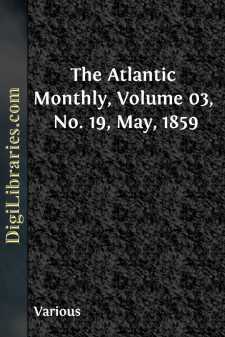Categories
- Antiques & Collectibles 13
- Architecture 36
- Art 48
- Bibles 22
- Biography & Autobiography 813
- Body, Mind & Spirit 141
- Business & Economics 28
- Children's Books 12
- Children's Fiction 9
- Computers 4
- Cooking 94
- Crafts & Hobbies 4
- Drama 346
- Education 46
- Family & Relationships 57
- Fiction 11826
- Games 19
- Gardening 17
- Health & Fitness 34
- History 1377
- House & Home 1
- Humor 147
- Juvenile Fiction 1873
- Juvenile Nonfiction 202
- Language Arts & Disciplines 88
- Law 16
- Literary Collections 686
- Literary Criticism 179
- Mathematics 13
- Medical 41
- Music 40
- Nature 179
- Non-Classifiable 1768
- Performing Arts 7
- Periodicals 1453
- Philosophy 64
- Photography 2
- Poetry 896
- Political Science 203
- Psychology 42
- Reference 154
- Religion 513
- Science 126
- Self-Help 83
- Social Science 81
- Sports & Recreation 34
- Study Aids 3
- Technology & Engineering 59
- Transportation 23
- Travel 463
- True Crime 29
Encyclopaedia Britannica, 11th Edition, Volume 6, Slice 1 "Chatelet" to "Chicago"
by: Various
Categories:
Description:
Excerpt
CHÂTELET (from Med. Lat. castella), the word, sometimes also written castillet, used in France for a building designed for the defence of an outwork or gate, sometimes of great strength or size, but distinguished from the château, or castle proper, in being purely defensive and not residential. In Paris, before the Revolution, this word was applied both to a particular building and to the jurisdiction of which it was the seat. This building, the original Châtelet, had been first a castle defending the approach to the Cité. Tradition traced its existence back to Roman times, and in the 18th century one of the rooms in the great tower was still called the chambre de César. The jurisdiction was that of the provostship (prévôté) and viscountship of Paris, which was certainly of feudal origin, probably going back to the counts of Paris.
It was not till the time of Saint Louis that, with the appointment of Étienne Boileau, the provostship of Paris became a prévôté en garde, i.e. a public office no longer put up to sale. When the baillis (see
AND) were created, the provost of Paris naturally discharged the duties and functions of abailli, in which capacity he heard appeals from the seigniorial and inferior judges of the city and its neighbourhood, keeping, however, his title of provost. When under Henry II. certainbailliagesbecame presidial jurisdictions (présidiaux),i.e.received to a certain extent the right of judging without appeal, the Châtelet, the court of the provost of Paris, was made a presidial court, but without losing its former name. Finally, various tribunals peculiar to the city of Paris,i.e.courts exercising jurisdictions outside the common law or corresponding to certaincours d’exceptionwhich existed in the provinces, were united with the Châtelet, of which they became divisions (chambres). Thus the lieutenant-general of police made it the seat of his jurisdiction, and the provost of the Île de France, who had the same criminal jurisdiction as the provosts of the marshals of France in other provinces, sat there also. As to thepersonnelof the Châtelet, it was originally the same as in thebailliages, except that after the 14th century it had some special officials, the auditors and the examiners of inquests. Like thebaillis, the provost had lieutenants who were deputies for him, and in addition gradually acquired a considerable body ofex officiocouncillors. This last staff, however, was not yet in existence at the end of the 14th century, for it is not mentioned in theRegistre criminel du Châtelet(1389-1392), published by the Société des Bibliophiles Français. In 1674 the wholepersonnelwas doubled, at the time when the new Châtelet was established side by side with the old, the two being soon after amalgamated. On the eve of the Revolution it comprised, beside the provost whose office had become practically honorary, thelieutenant civil, who presided over thechambre de prévôté au parc civilor court of first instance; thelieutenant criminel, who presided over the criminal court; twolieutenants particuliers, who presided in turn over thechambre du présidialor court of appeal from the inferior jurisdictions; ajuge auditeur; sixty-four councillors (conseillers); theprocureur du roi, fouravocats du roi, and eightsubstituts,i.e....











